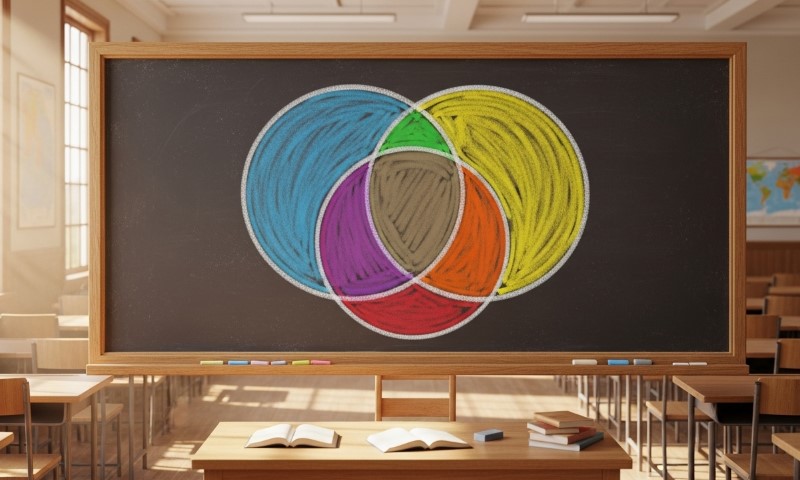
Share Post:
When most people think about early childhood, their minds go to snack time, nap time, maybe a little finger painting. Math? Not exactly front and center.
But here’s the twist: numbers, counting, and basic problem-solving are doing far more heavy lifting than we often give them credit for in those early years.
Turns out, math is quietly shaping everything from how kids think to how they feel about themselves—and even what kind of opportunities they’ll have later in life.
Table of Contents
ToggleKey Highlights
- Early math skills predict academic and career success
- Numbers build problem-solving and critical thinking
- Play-based math boosts confidence and resilience
- Everyday moments can spark lifelong math learning
Why Math Matters from the Start
Ever watch little ones sorting socks or comparing snack portions? Those everyday happenings may seem small, yet they carry a ton of value for building math skills.
Researchers have noted a strong link between early math prowess and later academic achievements—sometimes even more than early reading abilities.
Number sense, which starts as early as infancy, gives kids the mental framework to tackle more advanced concepts later on.
It’s also worth noting that kids who do well in math during their younger years often feel more comfortable tackling tricky tasks in high school and college.
There’s no need for lengthy introductions here. Let’s jump straight into how math can help a child flourish, inside the classroom and out.
Key Role of Numbers in Early Childhood Growth

1. Building Cognitive Power
According to FHSU Digital Press, numbers give children powerful thinking tools. Figuring out problems—like how many pieces of fruit fit into a bowl or how to split a cookie between friends—primes the brain for logic and problem-solving.
Experts often emphasize that the act of counting or comparing quantities can jumpstart more sophisticated reasoning over time.
A study highlighted on Phys.org looked at thousands of children and discovered a big connection: kids strong in early math were more likely to sail through elementary school with better overall performance.
Another piece of research showed that children struggling with math from kindergarten through fifth grade were noticeably less likely to graduate high school or attend college. Numbers, in other words, can pave the way for future academic gains.
2. Academic Path and Long-Term Effects
Imagine a child who starts kindergarten already comfortable with basic counting, sorting, and grouping. That child often gains a running start in class. Children who lack that comfort sometimes feel behind from day one.
Academic momentum is real, and early math offers a leg up. The National Council of Teachers of Mathematics (NCTM) has long stressed the importance of high-quality instruction for young learners.
Their guidelines encourage exposure to hands-on materials, playful math activities, and other approaches that promote curiosity.
Meanwhile, the NAEYC supports methods that weave math through daily routines rather than limiting it to formal lessons. Both organizations note that number knowledge blossoms when children see it as part of everyday life rather than an abstract exercise 3.

Social Growth and Confidence Numbers aren’t just about logic. Positive encounters with math can shape how children feel about learning in general.
Early wins with numbers, even small ones like counting steps or measuring how much water a plant needs, help youngsters believe in their own capabilities.
They build a growth mindset that says, “I might not get it yet, but I can learn with time.”
- Perseverance: Kids who work through math challenges learn that temporary confusion isn’t failure—just a step along the way.
- Teamwork: Collaborative problem-solving, such as dividing blocks equally in a group, promotes cooperation and empathy.
- Confidence: Celebrating small victories (like finally counting to 20 without skipping a number) fosters self-esteem.
Ideas for Making Math Fun at Home and in Class

Parents and educators often wonder how to strengthen math learning without overwhelming young minds and make it a more fun experience. It doesn’t need to be complicated. A few playful methods can go a long way:
1. Use Real-Life Moments
- Count steps while walking to the car.
- Sort crayons by color or length (sneaky introduction to basic measurement).
- Let children help measure ingredients during cooking, reinforcing the idea of quantity.
2. Embrace Play-Based Materials
- Board games with dice or spinners.
- Counting bears, peg number boards, or other hands-on items.
- Books like Chicka Chicka 1,2,3 and Pattern Bugs, which bring counting and patterns to storytime.
3. Prompt Curiosity with Questions

- Ask, “How did you figure that out?” or “Why do you think that number is bigger?”
- Encourage kids to predict outcomes, like how many steps it takes to reach the playground.
4. Try Simple Activities
- Gummy Bear Patterns: line up gummy bears in repeating color patterns and see if a child can continue it.
- Roll-and-Cover Dice Games: roll a die, then cover the corresponding number on a game sheet. Perfect for reinforcing number recognition.
5. Collaborate Between Home and School
- Talk about what happens in class.
- Attend events like Family Math Nights if they’re offered.
- Offer consistent practice through quick games or conversations around numbers.
Challenges on the Path Forward

Not every early childhood setting devotes enough time or resources to math. Some parents feel less comfortable teaching or exploring math themselves, especially if they grew up disliking the subject.
Achievement gaps also persist, often hitting children from low-income backgrounds or who speak languages other than English at home.
Researchers note that equitable access to high-quality math materials can transform outcomes for kids who might otherwise fall behind.
According to the Ballard Brief, low-SES students are behind in reading and math proficiency by 20–26 percentage points compared to high-SES students. Additionally, they enter high school with average literacy skills five years behind their high-SES counterparts.
Another hurdle revolves around debates about formal math instruction versus free-form exploration. Some worry that forcing structured lessons too early might suck the joy out of learning, while others see a risk in waiting too long to introduce more advanced concepts.
Most experts lean toward a balanced approach, weaving number skills into open-ended play. Families don’t need fancy equipment or degrees in math to foster growth, though.
Sharing puzzle time on the living room floor or chatting about which cookie is “bigger” can be surprisingly effective. Approaches that make math relevant to a child’s daily environment are often the most impactful.
A Quick Glimpse at Activity Examples
Below is a simple table that offers a few home- or classroom-based activities, their target skill, and an age range. It’s by no means all-encompassing, but it might spark ideas. Feel free to adapt based on a child’s interests.
| Activity | Target Skill | Recommended Age Range |
| Counting Steps on a Walk | One-to-one counting | Ages 2–5 |
| Sorting Socks by Size | Classification skills | Ages 3–6 |
| Gummy Bear Patterns | Pattern recognition | Ages 3–6 |
| Roll-and-Cover Dice Game | Number recognition | Ages 4–7 |
| Building Block Towers | Measurement concepts | Ages 3–8 |
Children who’ve already mastered basic counting or sorting can move on to more complex versions.
For instance, try counting by twos or sorting items by multiple attributes (shape and color, for example). There’s a ton of room to grow, and kids often shine when challenged just enough to keep things interesting.
Long-Term Career Edge

Plenty of grown-ups don’t realize how often math shows up in everyday life. Later in school, it might pop up in classes like science or technology.
Beyond that, job opportunities that lean on mathematical thinking span fields from finance to engineering to healthcare.
Early math experiences can shape the path toward careers that demand analytical skills and perseverance.
Some experts even link higher wages and career satisfaction to math proficiency, reflecting how those critical thinking habits spill over into so many areas.
Research from the Federal Reserve Bank of Cleveland indicates that individuals who undertake more mathematics courses in high school tend to earn higher wages and experience lower unemployment rates compared to those with less mathematical coursework. This trend persists even among workers with the same overall level of education.
In addition, being at ease with math can boost day-to-day abilities, like budgeting and time management. It’s not all about advanced calculus or algebra—fundamental number sense helps with everything from grocery shopping to understanding interest rates.
Setting the stage early can pay off more than many parents realize, building financial literacy and problem-solving chops well before adulthood arrives.
Wrapping Up
Nothing beats the smile on a child’s face when they count a set of objects and get it right, or when they discover a nifty way to group items by size. Math sparks curiosity, encourages resilience, and helps shape brain power.
Research lines up behind the idea that strong number skills in the early years pave the way for success in school and future careers.
Parents and educators don’t have to turn their lives upside-down to make it happen. Small choices—like pointing out numbers on a clock, sorting socks, or playing a quick dice game—can nurture lifelong confidence in problem-solving.
If you’re hoping to support a child’s development, start counting and comparing wherever you can. It might look simple, but it’s laying bricks in the foundation for a lifetime of learning.
References
- fhsu.pressbooks.pub – The Importance of Early Childhood Mathematics
- phys.org – Early math skills predict later academic success
- nctm.org – Mathematics in Early Childhood Learning
- naeyc.org – Early Childhood Mathematics: Promoting Good Beginnings
- ballardbrief.byu.edu – The Socioeconomic Achievement Gap in the US Public Schools
- clevelandfed.org – The Surprising Impact of High School Math on Job Market Outcomes
Related Posts:











